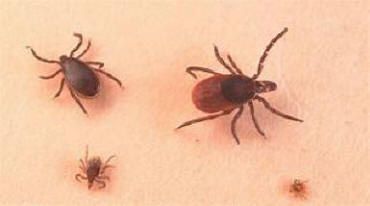Symptoms of Lyme Disease
Patients with Lyme illness frequently mention continuing their symptoms. These signs and symptoms are sometimes referred to as post-Lyme illness disorder or chronic Lyme disease, might appear after an erythema migrans rash goes away or after other, possibly undiagnosed infections, early-stage symptoms of the disease. This is the case even if the patient received the recommended course of antibiotics at the beginning. The most common symptoms reported by patients are pain, exhaustion, and neurological or cognitive problems. "After an interval (ranging from 3 to 30 days), the organism may spread through the lymph system and bloodstream with a propensity for the central nervous system (CNS), joints, heart, and eyes." The Lyme illness has been divided into three different stages. Erythema migrans, a spreading skin lesion that appears at the site of the tick bite within one to two weeks, is the most prevalent sign of infection during the initial stage. Erythema migrans usually appear as a bull's-eye or target-shaped rash that may itch but is not unpleasant. In a third of cases or fewer, other symptoms such as malaise, joint pain, fatigue, and increased fever also appear. After the first stage of local infection, B. burgdorferi spreads to the brain, heart, retina, liver, spleen, meninges, and other organs. In this second stage of generalized infection, the infection is detected in the blood and cerebrospinal fluid (CSF).
There may be more erythema migrans lesions, joint or muscle discomfort, and neurological symptoms during the second phase. Meningitis, neuropathy (especially facial nerve paralysis), radiculopathy, mild encephalopathy with memory and attention problems, mood swings, and sleep disturbances are among the neurological signs of widespread infection. Disseminated infection can be distinguished from viral infection by elevated protein levels in the cerebrospinal fluid. Acute facial palsy is the main neurological sign in young people. If treatment is not received, the infection will progress to stage 3, which manifests as rheumatic symptoms (chronic arthritis, especially of the knees) or neurological symptoms six months to several years after the first infection.
Neurological Symptoms
 Neurological
signs in stage III may include a history of persistent meningitis, which
may constrict the thin meningeal arteries and cause myocardial
infarction. A small percentage of Lyme disease patients who have
received treatment yet experience musculoskeletal and neurocognitive
symptoms; this condition is known as posttreatment chronic Lyme disease.
Neurological
signs in stage III may include a history of persistent meningitis, which
may constrict the thin meningeal arteries and cause myocardial
infarction. A small percentage of Lyme disease patients who have
received treatment yet experience musculoskeletal and neurocognitive
symptoms; this condition is known as posttreatment chronic Lyme disease.
Opinions on whether PCLD is a noninfectious illness similar to chronic fatigue syndrome or a persistent infection have divided experts, making it a contentious disorder. In addition to mood swings and irregular sleep patterns, Lyme encephalopathy can cause difficulties with verbal memory, naming, and concentration. Furthermore, children treated for Lyme disease had neuropsychological results that consistently show a fair prognosis.
At two- and four- year follow-ups, as well as throughout a variety of
follow-up intervals from seven to one hundred and sixty-one months,
there were no neurocognitive differences detected between children
treated for Lyme disease and controls.
